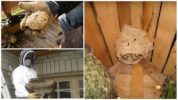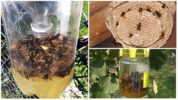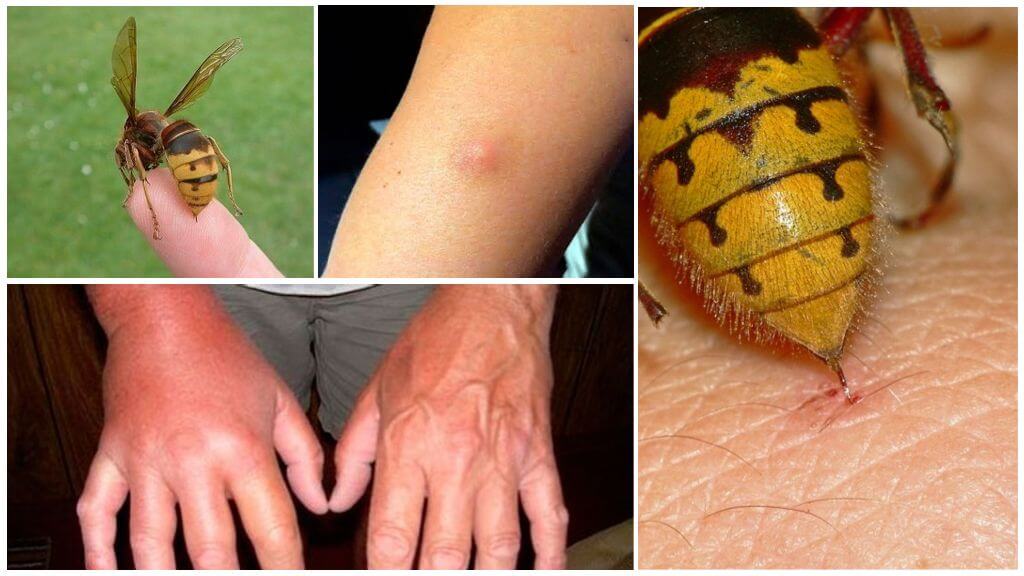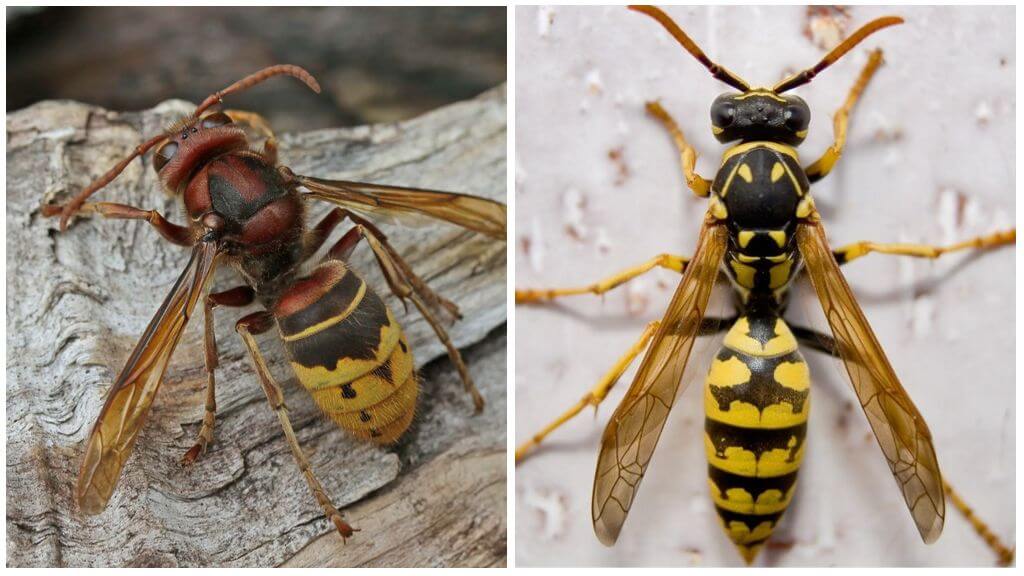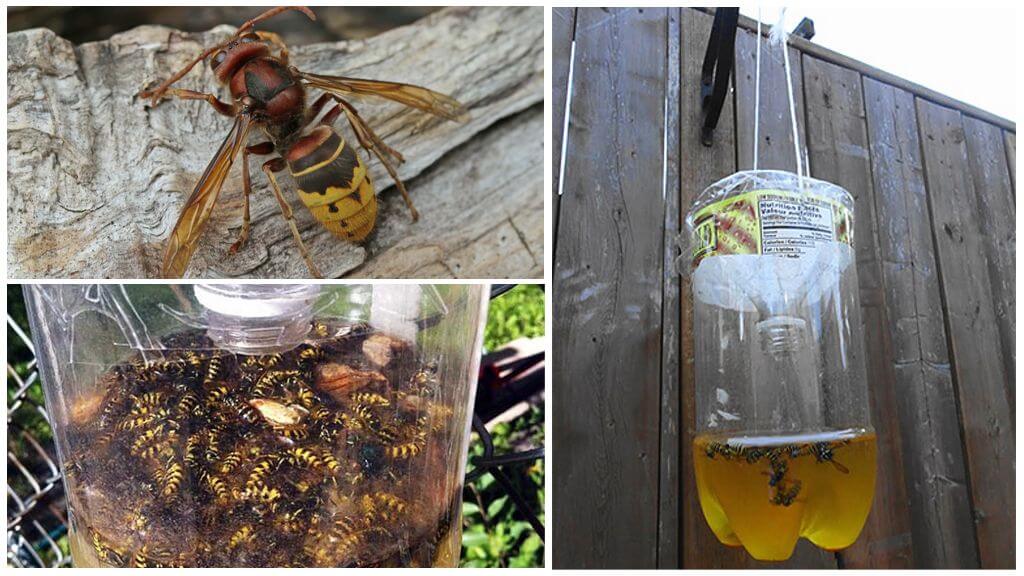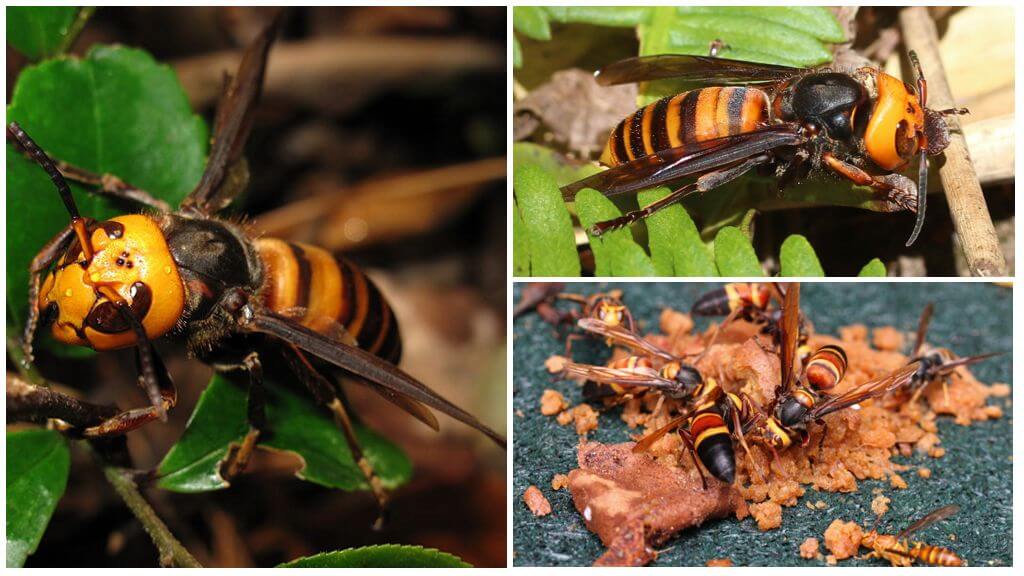- Hornet's nest
- Ways to destroy nests
- Preparations for the destruction of the hornet's nest
- Prevention of hornets and nest building
Finding a hornet's nest in your dacha or in the attic of your house, do not panic. There are many ways to help cleanse your home from such trouble so as not to wait for someone in the family to bite.
The appearance of hornets and the danger of their bites
Hornets - insects, very similar in appearance to wasps, but having some differences: a larger body size, brown abdomen. They are useful predators, because they feed on various garden pests and their larvae. They also love sweet nectar, vegetable fruit juices and honey. In the world there are more than 20 species of hornets, many of which are listed in the Red Book.
If the room often flies large yellow black wasps, then it means not far built their hornets nest.
On a note!
Killing individual individuals is completely optional: they cannot be scared or waved at them. It is better to wait until such a "wasp" sits down and catch it, covering it with a glass jar. Then carry away and release into fresh air.
However, one should know that the presence of a nearby colony can cause a lot of problems because of their ability to protect their home and numerous bites.
Hornet Danger has several unpleasant aspects:
- while protecting their home, they can attack a person and inflict him numerous bites;
- when stinging, hornets can take out a sting and bite their offender several times in a row, which is more dangerous for health, because the toxicity of such a poison can lead to a severe allergic reaction;
- such insects harm the bees by attacking and killing them, as well as destroying their hives.
Important!
For children, pregnant women and people with allergies, numerous hornet bites are very dangerous because they can cause Quincke's edema, anaphylactic shock and death.
Therefore, to get rid of such nasty neighbors, It is definitely worthwhile to search for the home ownership of the hornets, but for this you need to know what the nest looks like and where to look for it.
Nest and its search
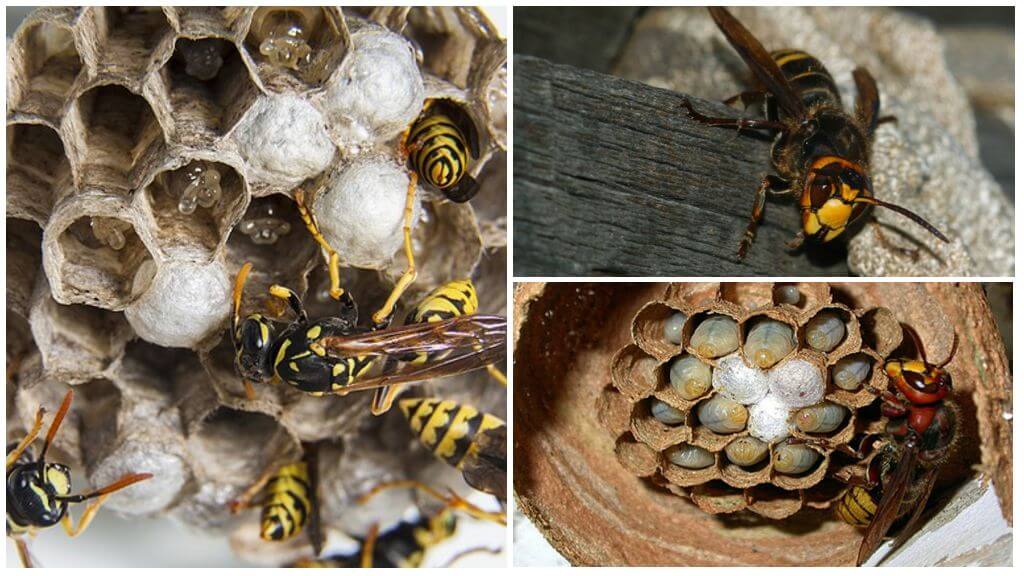
To make their hive, hornets use young tree bark. For construction, they chew it, moistening with saliva, which makes it soft and viscous. Then they build a nest in the form of a sphere, cocoon or cone of brown or gray color, the dimensions of which can reach up to 70 cm, as can be seen in the photo of the hornet's nest. Many adult working individuals are engaged in this at once, the noise from moving and chewing on the bark that is heard several meters from the hive.
Interesting!
Construction is carried out in tiers, usually from top to bottom. Inside, honeycombs of several floors and numerous transitions, similar to the contents of a bee hive, are made. The total number of plates with honeycombs sometimes reaches 500.
It is difficult to calculate how many hornets in a nest at a certain time, because the number of residents in a colony depends on favorable conditions and nutrition, on the stage of development. The uterus moves regularly, laying eggs, and working insects pull them apart along the honeycombs and feed them, observing the development of the larvae and their transformation into adults.On average, 300-400 inhabitants can live in a hive.
The location of the nest with the hornets can be different, the selection criterion for them is the search for a secluded place where there is no wind or draft:
- utility or household premises;
- attic or roof space;
- a secluded place on the balcony or loggia;
- in the cracks of the cladding of the building;
- in the branches of a bush or tree;
- inside a tree stump or hollow;
- abandoned animal burrows in the ground.
To find such a nest, it is easiest to track the flight of insects by putting some food bait, which they will drag in parts to their colony.
If such a structure is found inside the house or cottage, then it will be necessary to remove the hornet's nest from the attic or other room so as not to endanger the people living there.
Interesting!
Having settled not far from the apiary, the hornet family poses a great threat to the life of bees, because they will choose adult bees as hunting trophies, which they feed their larvae. In a mass attack, predators may well kill an entire bee colony of several thousand individuals in 2-3 hours.
Ways to destroy nests

The use of nests in such insects is seasonal and occurs only during the spring-summer-autumn period. Then the hornets leave their nests: the majority dies, and the fertilized females hide in secluded places in the hollows or under the bark of trees, where they fall into the diapause as the temperature drops before spring.
On a note!
It is winter that is an ideal period for the destruction of an already empty hive. It is easy to remove and destroy without fear of being bitten.
It is much more difficult to remove the nest together with its inhabitants, because they are very vigilant about their house and can attack a person, causing him a lot of harm.
Therefore, it is imperative to consider and take all possible protective measures:
- put on clothes made of thick fabric with long sleeves, cuffs should rest on your hands and fasten;
- it is imperative to wear a thick hat on your head, or better, a protective helmet with a net;
- on feet - boots and gloves - on the hands;
- safety glasses or mask - on the face;
- in this situation, the beekeeper's suit is ideal;
- prepare a disinfectant in case of bites, as well as an anti-allergenic agent;
- think in advance of a “retreat plan” and escape if a swarm of hornets chases: a pond or an enclosed space;
- children or allergic patients temporarily relocated to another place.

There are several ways to destroy a hornet's nest. Doing it better at night or at dusk:
- Drowning the hive in a bucket of water or in a solution with kerosene, and it is not necessary to remove it. If the nest is located at the top, then it is better to raise the bucket to it, substituting the stepladder under the bottom. Immerse the hive whole in the liquid for several hours, preferably for a day. After waiting for time, remove the softened house.
- Quite easily, you can remove the nest by treating it with an insecticidal aerosol designed to kill pests: Executioner, Get, Karbofos, Lambda Zone, etc. It will take 2-3 bottles. You need to spray the entire internal cavity of the hive through the inlet, then go away and do not touch it for several days. During this time, those individuals who did not sleep in it will also return to the poisoned dwelling, and they will also die from the poison. Later, the house is better to burn.
- Treat the nest with foam from a fire extinguisher, trying to wet the honeycomb, all residents freeze. Further, the house can be torn from the base and destroyed.
- You can remove the nest hanging on a tree branch by burning it, for which you need kerosene or gasoline, but care must be taken not to set off a fire.
- If the hornets settled in the hollow of a tree with a narrow entrance, then you can fill in a strong chemical agent, and then quickly fill up all the cracks.
- You can reliably exterminate the nest and the inhabitants by taking a large plastic bag and letting a stream of insecticidal spray into it, then to cover or wrap it with a dwelling, trying to seal it. This method is convenient when you need to remove the hornet's nest in the house.
- Another way is to block the entrance to the nest with a mounting foam.
- When the colony is located in a burrow underground, it is better to fill it with boiling water or to spread a fire in this place, slightly digging the inlet.
- In the "underground" dwelling, you can pour kerosene and set fire.
On a note!
All of these methods are best used at night or in the evening, when the activity of predators is reduced. Contrary to popular belief, night is not the time when hornets are sleeping: they are either resting or busy with other things at such hours. You need to use the flashlight during the procedures very carefully, because insects react negatively to changing lighting.
Prevention of hornets and nest building
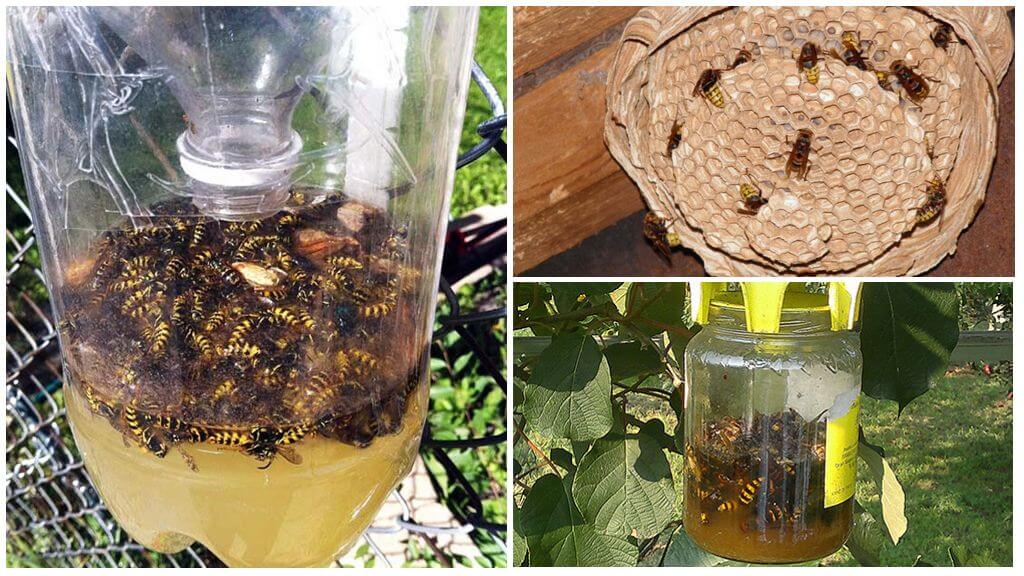
To prevent hornets from settling in the garden or apiary, experienced gardeners and beekeepers begin to carefully observe in spring the appearance of females, who, after hibernation, begin to search for a suitable place for the formation of a colony.
Large females up to 5 cm in size, having found a suitable branch or hollow, begin to sculpt a nest in order to breed offspring and organize a colony. At first it looks like a small walnut. At such a moment, you can easily tear it off with a shovel or other tool, then crush or burn along with the inhabitants.
Specialists also advise in the spring make traps for catching hornets uterus, for which a bucket of water is placed in which something sweet or sour (vinegar) is added, and then a soap product is added. Insects fly into the smell, and then drown because of the inability to get out of the liquid.
Similarly, a trap is made of a plastic bottle with a cut-off neck, which is placed inside as a “funnel”. Inside, pour a solution of honey and beer, on the aroma of which all insects flock and fall down. They will not be able to get upstairs.
Such methods will help to prevent the spring settlement of a hornet colony in a site or apiary. By the beginning of summer, all large uterus equip their homes, and the danger of their arrival is sharply reduced.
Important!
The hornet cannot simply be killed or slammed, because when crushed, an odorous substance is released from the body, which signals the brothers about the danger and calls them to help. And this is fraught with the beginning of a massive attack of a whole colony of "biting" insects.
Conclusion
When deciding to destroy the nest and bring out the hornets themselves, one should take into account how real the threat of their living next to people or bees in the apiary is. After all, these insects benefit nature, and many of their species are even listed in the Red Book, as they disappear from the face of the Earth.

